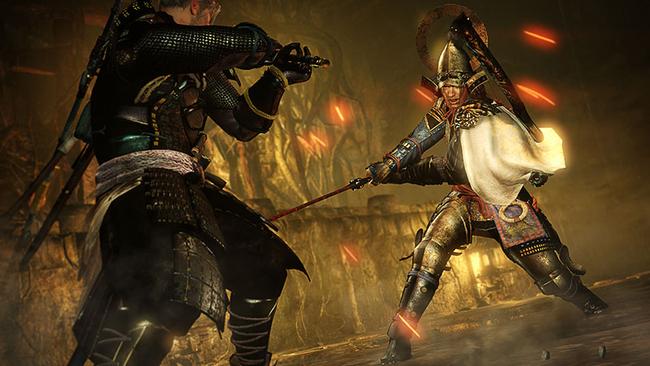
Nioh Guide: How to use Stances to tear apart your enemies
Nioh bears many similarities to other super-hard Japanese Action RPGs that have taken the industry by storm, but in some ways it really breaks out and finds its own unique mechanics. Many of those mechanics have been subject of our guide pages, and few are more key to enjoying Nioh than the Stance system, a major addition that impacts every facet of combat.
Broadly speaking stances make an awful lot of sense for Nioh's setting - it tries to channel the energy and feeling of the samurai, and stance is of course a hugely important element of that type of swordplay. You have three distinct stances in Nioh, and each has its own advantages and disadvantages.
Below we'll get into that: what each stance does, what each is good at, and where you should look to use them.

Nioh: How stances work and how to use each stance to the best effect
Nioh's stances are displayed on the HUD at all times. They're a constant fixture of Nioh's combat, visible from the end of the tutorial on and constantly available for you to switch between. In an ideal world, you'll be switching stances on the fly on a per-encounter basis, or even switching stance mid-boss depending on what the boss is up to. Sometimes a breakthrough on a rough encounter might come simply by changing approaches by changing stance, so try it.
To switch stance you simply hold R1 and tap either Triangle, Square or Cross.
The stances actually break down in a relatively simple way. First up, the three have different Ki/Stamina usage. On top of that, each stance generally aims at a different height, meaning shorter or flying enemies might be more likely to be caught by certain stances. There are also key differences in speed and attack power to take into account. Let's break it down:
Low Stance
The Low Stance uses less Ki when you attack or are hit and has a low damage output. William will also strike low on the enemy, making this an ideal stance for shorter foes. The primary purpose of low stance is to give you the maneuverability to move about the battlefield more quickly. The idea is you can use this stance to dance around enemies in full, get behind them and then unleash a flurry of weak but fast and furious attacks. If you need to run away, your first port of call should be to switch to low stance for any mid-flight evasion.
Mid Stance
Medium/Mid Stance is balanced, as you'd expect. It lands most of its blows on center mass of your average human enemy by William's standards and deals decent damage. With that said, this stance is of course a jack of all trades and a master of none - it's not the fastest or the most powerful, and it doesn't reward William the most nimble movement. That doesn't mean this stance is bad, however, and where low is your go-to for remaining evasive while moving about, mid stance should be your go-to for combat.
High Stance
High Stance sees William take on a particularly aggressive pose, sword raised above his head - and that tells you everything that you need to know, really - this stance is all about aggression. Ki consumption in this stance is absolutely monstrous, but the trade-off is that all of its attacks pack an incredible punch that can break down an enemy's defenses with ease. It is an all-out-attack stance, however - your ability to dodge or even block attacks is extremely limited. You want to use this stance sparingly, but if you can switch to it when a boss is weakened and then escape with enough time to switch back to a more defensive stance, using heavy for that is ideal.